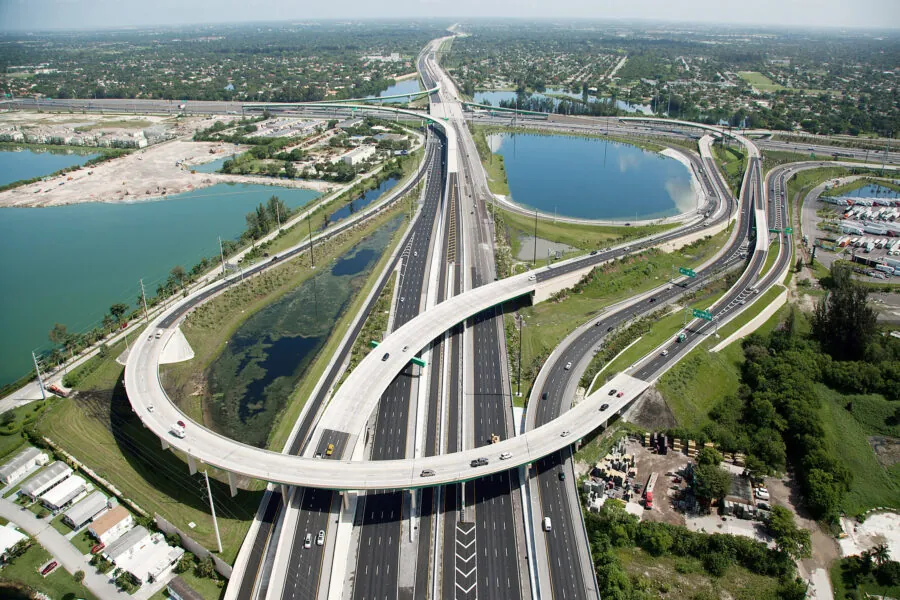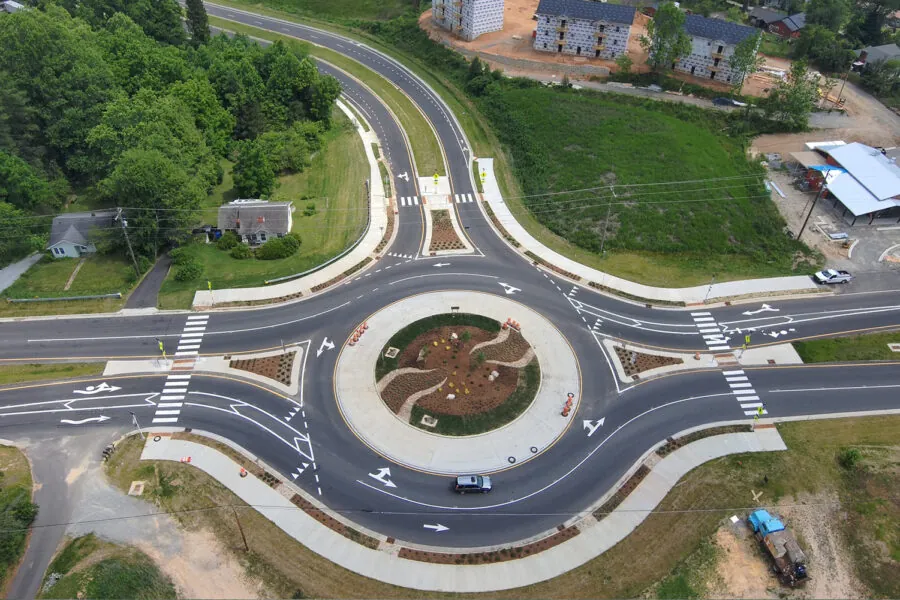Toll Facility System Connectivity

More and more commuters have recognized the convenience and benefits of managed lane roadways. Agencies are responding to this growing acceptance by expanding these facilities and creating a safe and efficient regional network of managed lanes. Due to the overall magnitude of these projects and their potential to dramatically improve mobility, agencies look to optimize toll operations by developing an end-to-end customer experience for motorists.
These projects vary and include system improvements such as:
- Adding managed lanes to the existing expressway with an improved interchange connecting to another toll facility.
- Extending an existing managed lane expressway and constructing or improving interchanges.
- Providing direct access to airports or other traffic generators.
- Constructing a new toll road connecting interstate highways.
- Providing new access and accommodating express bus service in mixed traffic along the corridor.
When linking major toll facilities, agencies must address system-to-system connectivity both in the design of the roadway connection and the operations of the toll system. By identifying the differences between the connected corridors, designers can develop context-sensitive solutions that address the physical constraints, interchange modifications, and traffic control to enhance the operations of the combined facilities.
By employing a systems approach to managed lane connection projects, designers and toll administrators come together to address both infrastructure and technology enhancements. Infrastructure enhancements include capital improvements designed to improve roadway operations. Technology enhancements address improving toll and traffic operations and the customer experience.
Infrastructure Enhancements
The engineering design starts by comparing the feasibility for incorporating managed lanes into the existing right of way and the compatibility with cross roads through the limits of the project. By using screening criteria, the agency can assess the feasibility of the facility to meet its established needs, goals and objectives. Close coordination with local agencies also allows the designers to study the ongoing plans and projects being conducted by others in the area.
The next step is to analyze both the roadway geometry and design features affecting the joint operation of the regional network. A key infrastructure element is addressing the type of at-grade access to be implemented. The locations of at-grade access openings need to be closely coordinated with highway entrance and exit ramps. Access needs to allow adequate room for motorists to complete weaving movements when moving between the general-purpose and managed lanes and at entrance or exit ramps. Where heavy weaving between the managed lanes and interchange ramps is expected, designers look at grade-separated access. This is especially relevant where multilane managed lane treatments are being considered.
The Concept of Operations (ConOps) serves to document the consensus built among the partnering agencies. As a critical component to the systems engineering process, the ConOps provides a framework for the future development of the combined functional/design requirements. The ConOps document describes the operational requirements. It will include the various geometric improvements and address anticipated and improved system connectivity between facilities and the connectivity to principal arterials and transit facilities.
Technology Enhancements
In addition to the physical geometric improvements, the following toll system components need to be addressed:
- Toll System Interfaces
- Toll System Software
- Contract reviews and Procurement
- Transaction Processing and Back Office Operations
- Dynamic Message Signs (DMS) System
- Vehicle Detection System and Optical Character Recognition
- Closed‐Circuit Television (CCTV) Cameras System
- Ramp Signal System
Technology enhancements consider ways to address and improve the customer experience as well as toll and traffic operations. This is accomplished not only through investments in toll and ITS technology upgrades, but also includes the integration of existing and new systems as a complementary system network. The early development of technical requirements ensures that they are accommodated in the roadway infrastructure design. This allows them to reflect the agency’s operations plans and procedures and business rules.
The physical changes to the corridor can have a significant impact on the existing toll operations. The impacts may result in the need for:
- Additional back office and Traffic Management Center (TMC) Staff – The Managed Lanes may increase the existing workload at the TMC in the following areas:
- Day‐to‐Day Operations
- Day‐to‐Day Ramp Signaling Operations
- Additional performance reporting requirements
- Technical/Engineering analysis to monitor/update various dynamic algorithm parameters and procedures
- IT/Software support
- Public Outreach/Customer Service Support
- Additional Toll System and Intelligent Transportation Systems (ITS) Maintenance – The system equipment along the project corridor increases at project completion. This results in the need for additional resources to:
- Ensure that the system is functioning properly
- Benchmark performance
- Verify that past problems have been rectified
- Identify current problems
- Verify ongoing performance
- Additional Incident Management Resources – One key objective is to provide a more reliable trip within the express This requires additional incident management resources to respond and clear incidents faster than what may be currently provided within the project corridor, as well as to address the additional maintenance of traffic resources needed during lane closures.
Additional constraints that can affect both the design and technology deployment include:
- Flyovers that connect the facilities and provide direct access from the managed lane to a toll-only facility may require the development of operational policies associated with tolling and signing associated with warning drivers of this operational conversion between the two systems.
- At areas where shoulder widths are limited, performance within the managed lanes may be impacted during shoulder events. Furthermore, shoulder events in areas where the shoulder widths are narrower than 10 feet may prompt more managed lanes closures to ensure safety for responders, which may affect revenues. Also, limited shoulders will limit the locations available to provide toll violation enforcement in the field.
In developing a regional connection between managed lanes facilities, emphasis needs to be placed on the project’s key elements including cost, ease of implementation, system development and technical requirements. By exploring all options for efficiently managing the roadway network and how the combined toll system meets the customer’s desire for a positive end-to-end experience, the agency can identify the pros and cons of each infrastructure and technology enhancement and their impacts to cost and schedule.




